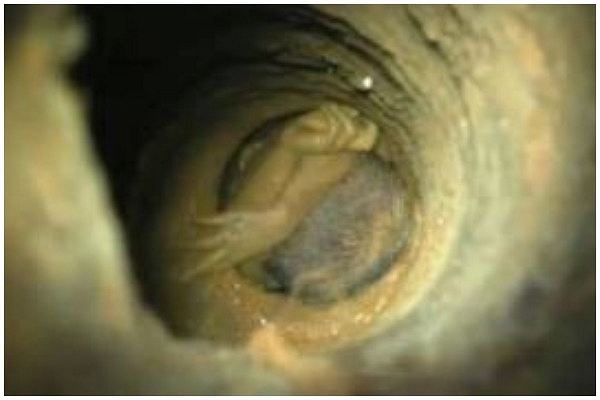
Perhaps Tamil Nadu Could Have Developed The Technology To Aid In Sujith’s Rescue By Now, If Only Neutrino Observatory Had Not Been Opposed By Dravidianists And Luddites
Let us realise that we cannot have a Luddite attitude to science and technology through shallow activism on the one hand, and expect science to do miracles for us during our times of crisis, on the other.
Sujith Wilson has died. The two-year-old child had fallen into an abandoned bore-well on Friday evening. After a massive search and rescue operation that lasted for almost 80 hours, the child could not be rescued.
The whole of Tamil Nadu united in praying for the child, hoping against hope for a miracle. The Prime Minister too joined in the prayers and a state minister was at the spot almost all the time during the rescue operation.
Even as the rescue operation went on, a section of the radical Luddite leftists, on social media as well as mainstream Tamil media, started pouring scorn on science and technology establishments of the nation.
‘You could send a rocket to the moon but cannot rescue a child at 70 feet?’ memes and tweets and Facebook messages suddenly started filling Tamil Nadu’s digital space.
Incidentally, a director who had made a movie on a similar situation became the subject matter expert for the TRP-seeking media. The director had also opposed vaccination in the movie.
Such anti-science, left nexus with anti-Tamil conspiracy theories thrown in pass off as ‘progressive activism’ in Tamil media — both in the mainstream and on social media.
Progressives and associated NGOs from the same school of thought were responsible for the opposition to another project — the India-based Neutrino Observatory (INO) at Bodi West Hills, Tamil Nadu.
It was to be essentially an underground research observatory. The proposed underground laboratory would have been built with more than a 1000 metres of rock cover overground, having a horizontal access tunnel with a length of 1.91 kilometres.
A laboratory such as this is built with building and safety precautions and contingency-mitigating technology.
The construction of this tunnel would have happened under a rocky mountain. This tunnel would be essentially for human movement, unlike the ONGC tunnels that are drilled only to take out oil and gas.
So, constructing this tunnel would have necessitated learning the technology to rescue humans in case of any untoward incident.
Any such scientific project comes with its own spin-offs that can benefit society.
A very good example of this was given by Dr A P J Abdul Kalam himself.
The spin-off from missile technology’s 'E-glass reinforced polypropylene composites' has been used to create orthopaedic appliances used in the treatment of polio.
Materials such as these have in them the needed qualities of durability, lightweight and affordability.
So, from a project in the missile technology, we have today a complete technology spin-off that makes walking aids “available for Rs 300 and weighing as less as 300 gm. It can be fitted to a needy child in less than an hour.”
Not only in Tamil Nadu but also in many parts of India, children falling into unsafe abandoned bore-wells has become a serious problem.
In June this year, a two-year-old boy, who was rescued from a 150 ft borewell after a struggle of 109 hours, died in the hospital later.
It does not take too much intelligence to realise that while digging a tunnel for the (now stalled) INO laboratory, the scientists would have faced technological challenges associated with maintaining human movement inside such a tunnel below 1000 ft.
It would have given the scientists some valuable insights to develop appropriate technological mitigation plans and procedures, which in the hands of a people-oriented scientist like Dr Kalam could have been integrated with operations that are now used to rescue children fallen into borewells/deep shafts.
However, the Luddite movement in Tamil Nadu does not allow such projects to ever be established in the state.
During the current rescue operations, a leader belonging to VCK (Viduthalai Chiruthaigal Katchi) spread — through social media — a video purportedly of a similar rescue operation being successfully done in China.
But what they overlook is that in China, huge science and technology projects are implemented with the least care for people’s protests.
Some of the successful space rocket programmes of China had destroyed entire villages when their launches failed — a kind of human cost that we Indians have never paid for our modest but successful space missions.
Recently China even demonstrated quantum teleportation successfully. The needed research facility in China was installed atop a mountain in Tibet.
In 2016, China installed the world’s largest radio telescope — for listening to possible alien signals — in the Guizhou Province by dislocating 9000 villagers. Such gigantic projects are implemented in China and naturally, lessons are learned at huge human costs.
What gets spread on social media particularly during tragedies like the one we witnessed now are select success stories with an ulterior aim of demoralising our science and technology establishments.
Let us realise that we cannot have a Luddite attitude to science and technology through shallow activism on the one hand, and expect science to do miracles for us during our times of crisis, on the other.
So instead of launching rhetorics on space technology not saving Sujiths, if we allow science and technology projects to develop in Tamil Nadu in particular, and India in general, we can save quite a lot of human lives and avert tragedies like this in the future.